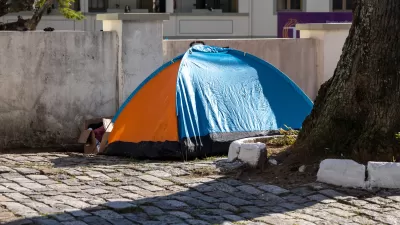By overturning the Chevron doctrine, the Supreme Court stripped federal agencies like the EPA of final say when interpreting ambiguous legislative policies, leaving future decisions up to judges.

According to an article from Grist, “The Supreme Court on Friday threw into question the future of climate and environmental regulation in the United States, scrapping a decades-old legal precedent that gave federal agencies leeway to interpret laws according to their expertise and scientific evidence.” Legal experts say the decision, which overturns the “Chevron deference” could lead to an increase in legal challenges against federal agency regulations that keep our land, water, and air clean, and mitigate climate change.
Grist reporters Jake Bittle and Zoya Teirstein write, “Federal courts have long deferred to federal agencies to interpret laws that are unclear and need further clarification. In 1984, a shorthanded Supreme Court ruled in a unanimous decision that federal agencies have the final say on ambiguous policies, which allowed those agencies broad authority to make decisions without fear of judicial override.” The Supreme Court’s recent decision revokes that authority and instead will leave decisions up to judges, who do not have the breadth of financial, scientific, and safety expertise that federal agencies have.
The Grist article delves deeper into the Court’s opinions, but broadly, the Court’s majority opinion (6-3) felt the Chevron deference stripped courts of judicial power and permitted overreach by the executive branch, while dissenting justices say that authority was crucial to protect the environment, public health, and economy and that, without it, the Supreme Court will now function as the “country’s administrative czar.”
“What’s at stake [in the decision] is whether courts are going to defer to agencies interpreting statutes or whether courts are going to stop doing that, and with more regularity take it on themselves to interpret the statutes even when they’re ambiguous, which means they may be in the position of making more policy choices,” Michael Burger, the director of the Sabin Center for Climate Change Law at Columbia University, told Grist.
FULL STORY: The Supreme Court overturns Chevron doctrine, gutting federal environmental protections

Planetizen Federal Action Tracker
A weekly monitor of how Trump’s orders and actions are impacting planners and planning in America.

DARTSpace Platform Streamlines Dallas TOD Application Process
The Dallas transit agency hopes a shorter permitting timeline will boost transit-oriented development around rail stations.

Congressman Proposes Bill to Rename DC Metro “Trump Train”
The Make Autorail Great Again Act would withhold federal funding to the system until the Washington Metropolitan Area Transit Authority (WMATA), rebrands as the Washington Metropolitan Authority for Greater Access (WMAGA).

Supreme Court Ruling in Pipeline Case Guts Federal Environmental Law
The decision limits the scope of a federal law that mandates extensive environmental impact reviews of energy, infrastructure, and transportation projects.

Texas State Bills to Defund Dallas Transit Die
DART would have seen a 30% service cut, $230M annual losses had the bills survived.

Bikeshare for the Win: Team Pedals to London Cricket Match, Beats Rivals Stuck in Traffic
While their opponents sat in gridlock, England's national cricket team hopped Lime bikes, riding to a 3-0 victory.
Urban Design for Planners 1: Software Tools
This six-course series explores essential urban design concepts using open source software and equips planners with the tools they need to participate fully in the urban design process.
Planning for Universal Design
Learn the tools for implementing Universal Design in planning regulations.
Roanoke Valley-Alleghany Regional Commission
City of Mt Shasta
City of Camden Redevelopment Agency
City of Astoria
Transportation Research & Education Center (TREC) at Portland State University
US High Speed Rail Association
City of Camden Redevelopment Agency
Municipality of Princeton (NJ)





























